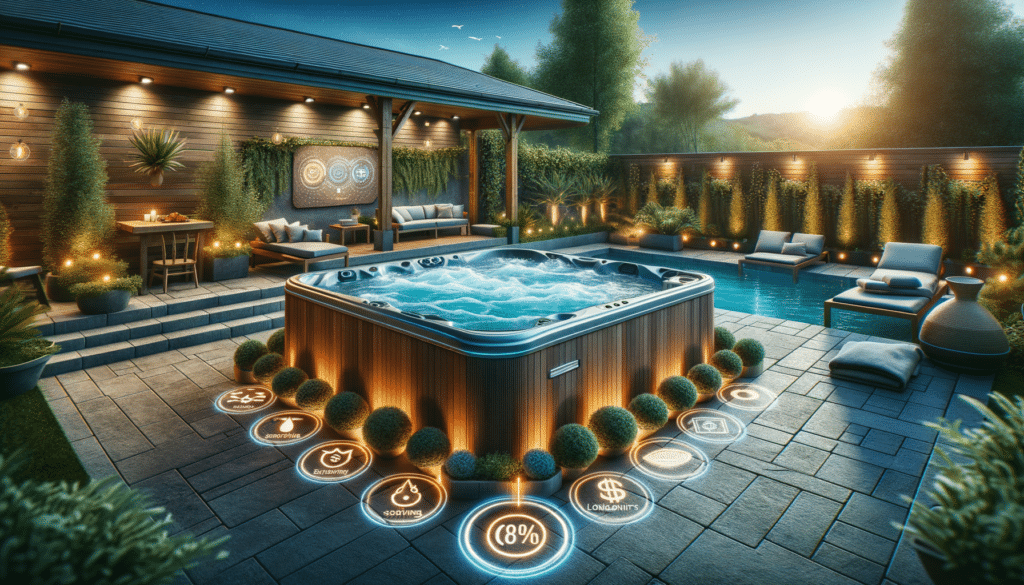Understanding Swim Spas
Swim spas are an innovative blend of a swimming pool and a hot tub, offering the benefits of both in a single compact unit. These versatile installations are designed for those who seek the therapeutic advantages of a spa with the exercise potential of a swimming pool. Swim spas are equipped with powerful jets that create a current, allowing users to swim in place. This feature makes them an excellent choice for fitness enthusiasts who want to incorporate swimming into their routine without requiring a large space.
Swim spas come in various sizes and designs, catering to different needs and preferences. They can be installed indoors or outdoors, providing flexibility in terms of location. The compact size of swim spas makes them ideal for urban dwellers who may not have the space for a full-sized pool. Additionally, they often include features such as adjustable current settings, ergonomic seating, and hydrotherapy jets, enhancing the overall user experience.
For those considering adding a swim spa to their home, it’s essential to understand the variety of options available. From models designed for intense aquatic workouts to those focused on relaxation and hydrotherapy, swim spas offer something for everyone. The ability to customize features and settings further adds to their appeal, making them a popular choice for individuals and families alike.
Benefits of Swim Spas
Swim spas provide numerous benefits that make them a worthwhile investment for many homeowners. One of the primary advantages is the ability to enjoy a full-body workout without leaving home. The resistance created by the swim spa’s jets is ideal for cardiovascular exercise, muscle strengthening, and endurance training. Unlike traditional pools, swim spas offer the convenience of year-round use, as they can be heated and covered to suit various weather conditions.
In addition to fitness benefits, swim spas are renowned for their therapeutic properties. The combination of warm water and hydrotherapy jets can help alleviate muscle tension, reduce stress, and improve overall well-being. Many users find that regular use of a swim spa enhances their quality of life by promoting relaxation and aiding in recovery from physical exertion.
Swim spas also offer social benefits, serving as a focal point for family gatherings and social events. Their compact size and versatile design make them suitable for a wide range of activities, from leisurely swims to lively pool parties. Moreover, the installation of a swim spa can increase the value of a property, making it an attractive feature for potential buyers.
Cost Considerations for Swim Spas
The cost of a swim spa can vary significantly based on factors such as size, features, and installation requirements. On average, prices range from several thousand to tens of thousands of dollars. While this may seem like a substantial investment, the long-term benefits and versatility of swim spas often justify the expense.
When budgeting for a swim spa, it’s essential to consider not only the initial purchase price but also ongoing maintenance and operational costs. These may include expenses for electricity, water treatment, and routine servicing. It’s advisable to research different models and consult with professionals to determine the most cost-effective option that meets your needs.
For those concerned about cost, there are strategies to make swim spas more affordable. Exploring financing options, looking for sales and promotions, and considering pre-owned models are all viable ways to reduce expenses. Additionally, investing in energy-efficient models can lead to savings on operational costs over time.
Design and Space Considerations
Design and space considerations are crucial when planning to install a swim spa. The versatility of swim spas allows them to fit into various environments, but careful planning is necessary to ensure optimal placement and functionality. Whether you are considering an indoor or outdoor installation, assessing the available space and structural requirements is a critical first step.
Outdoor swim spas offer the advantage of natural surroundings and can be integrated into garden landscapes or patio areas. However, they require adequate protection from the elements and may need additional features such as decking or enclosures. On the other hand, indoor swim spas provide privacy and protection from weather conditions but demand sufficient ventilation and structural support.
When selecting a swim spa, consider the design elements that will complement your home’s aesthetics. From sleek modern designs to more traditional styles, there are swim spas to suit every taste. Customization options, including color choices, seating arrangements, and additional features, allow you to create a personalized oasis that enhances your living space.
Installation and Maintenance Tips
Proper installation and maintenance are key to maximizing the lifespan and performance of a swim spa. Professional installation is recommended to ensure that all components are correctly set up and that safety standards are met. This includes electrical connections, plumbing, and any structural modifications needed to support the swim spa.
Once installed, regular maintenance is essential to keep the swim spa in optimal condition. This involves routine cleaning, water treatment, and equipment checks. It’s important to follow the manufacturer’s guidelines for maintenance and to schedule periodic professional servicing to address any potential issues.
To enhance the longevity of your swim spa, consider implementing energy-efficient practices. Using a high-quality cover can reduce heat loss and protect the spa from debris. Additionally, maintaining the correct water chemistry and using energy-efficient pumps and heaters can contribute to lower operational costs and a more sustainable setup.


